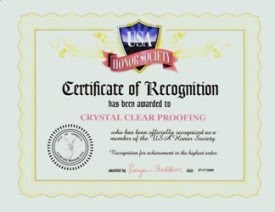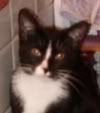That is used to introduce essential phrases.
Which is used to introduce non-essential phrases.
_________________________
"The book that I referenced last week would be helpful."
That introduces an essential phrase. We don't know which book is being referred to without the essential phrase of "that I referenced last week."
"The book on grammar, which I referenced last week, would be helpful."
Which introduces a non-essential phrase. "The book on grammar would be helpful," still makes sense without the non-essential phrase of "which I referenced last week."
****************************************
THAT
What that is describing cannot be removed or the sentence will not make sense or convey the desired meaning.
That is used with essential phrases.
_________________________
"He attends a college that offers classes he needs to obtain his degree."
"He attends a college," does not convey the complete meaning of the sentence - "that offers classes he needs to obtain his degree" is an essential phrase.
"She enjoys books that are full of suspense."
"She enjoys books," is not the point - "that are full of suspense" is an essential phrase.
****************************************
WHICH
What which is describing can be removed and the meaning of the sentence will make sense and will convey the desired meaning.
Which is used with non-essential phrases and is usually surrounded by commas.
_________________________
"She wrote a blog, which included pertinent information, that was helpful to many readers."
"She wrote a blog that was helpful to many readers" still conveys the desired meaning - without the non-essential phrase of "which included pertinent information."
"His books, which contain much detail, are very popular."
"His books are very popular" relays the same message - without the non-essential phrase "which contain much detail."
****************************************
SYNOPSIS
What that describes is an essential phrase.
Removing what that is describing, results in the sentence not making sense or not conveying the desired meaning.
_________________________
What which describes is a non-essential phrase.
Which is almost always surrounded by commas.
Removing what which is describing results in the sentence still making sense and still conveying the desired meaning.
Subscribe to:
Post Comments (Atom)

































































Another excellent grammar lesson. Might I suggest Who and Whom. I actually know how to use them but have a bad habit of using who in every situation.
ReplyDeleteCC - Thanks for the compliment and the input! "Who and Whom" has officially been added to the list of posts to do!
ReplyDeleteI really do appreciate it when you guys give me ideas or would like a certain topic or word(s) covered! Thanks for the suggestion!
Crystal, I think I'm going to print out all your posts and staple them together for my own style book. Thanks!
ReplyDeleteAlan: What an awesome compliment! It is so rewarding to hear that my posts are helpful (and understandable!)
ReplyDeleteThank you!
I think I suck at this one, too...
ReplyDeleteDiane: That's when it's handy to have a good editor to catch the tricky ones for you! :>)
ReplyDeleteOnce again, a clear (crystal), concice, and easy to understand tutorial, my dear. And once again, I got it bookmarked. I'm putting together an editing/proofreading e-book for my personal use with the compilation of all these wonderful posts - thanks!
ReplyDeleteThe Old Silly
oops - should've written "concise" - sheesh, glad this wasn't one of your spelling challenge posts - lol.
ReplyDeleteI tagged you in the Entertainment Meme Diane started.
ReplyDeleteCC - My goodness, I have officially made note to continue reading further down on your posts...I completely missed that entire portion!
ReplyDeleteYou are really rockin this grammar instruction! I am currently working on a short story for class, which must be submitted this week, and this was very helpful. Did I get it right?
ReplyDeleteChristine: You got it! Good job! :>)
ReplyDelete